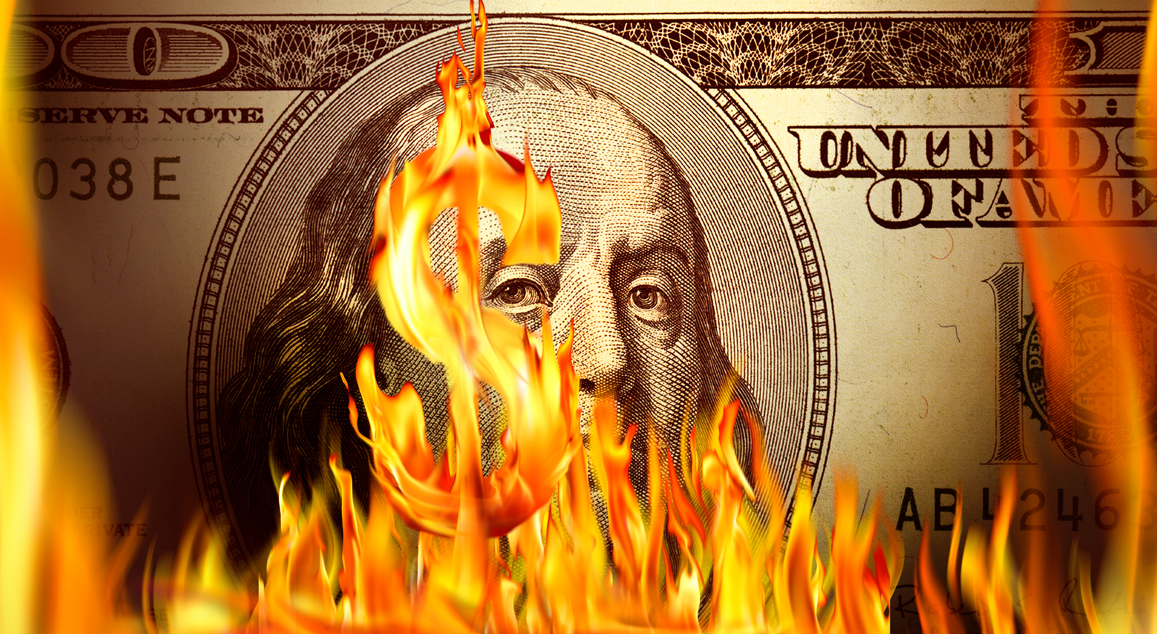
Mounting Deficits Mark the US’s Road to Ruin
According to the U.S. Treasury, year-end data from September 2023 show that the deficit for the full year 2023 was $1.7 trillion, $320 billion higher than the prior year’s deficit. As a percentage of GDP, the deficit was 6.3%, an increase from 5.4% in FY 2022. This means that the United States will likely post the worst GDP growth excluding debt increases since 1929, or, in other words, that the country is in a recession disguised by bloated deficit spending.
This disastrous result shows that the Keynesian science fiction of the public sector multiplier does not work. The Biden administration increased taxes, but revenues declined. Governmental receipts totaled $4.4 trillion in FY 2023 (16.5 percent of GDP), 9.3% lower than in 2022 and below the budget projections. This decline is mostly due to $456 billion in lower individual income tax receipts and $106 billion in lower deposits of earnings by the Federal Reserve due to higher interest rates, according to the Treasury.
The mirage of fiscal consolidation through revenue measures has proven to be false yet again. Lower-than-expected tax receipts are another clear indication of a weak economy. We cannot forget that the Biden administration increased taxes, expecting a record revenue figure. The opposite happened.
You may think that the deficit is a result of rising yields and that the central bank could have monetized the debt, but that would have meant higher inflation and an even worse deficit because the government would have increased expenditures well above the $6.1 trillion as it always does.
The United States government is unable to spend less than 22.8% of GDP, and no tax revenue measure can eliminate the deficit. Those who think that taxing the rich would eliminate the deficit should ask how the government would collect $1.7 trillion in additional taxes per year and every year, no matter what the growth of the economy is.
With $33.6 trillion of public debt and the administration’s own estimate of the accumulated deficit for 2023–2022, public debt is going to soar by $14 trillion. No tax measure can eliminate that problem.
Deficits are always a spending problem. Massively monetizing government spending was the cause of inflation. The excessive money growth created a persistent inflationary problem that continues to this day, even with declining monetary aggregates. This level of inflation remains because the government continues to consume an excessive amount of newly created currency units, and money market fund inflows show that the reduction in base money (M2) may be misleading to predict an abrupt fall in the interannual inflation rate. It is impossible to believe that a massive intervention from the Federal Reserve would have avoided the increase in deficit, but it does not even matter. Even if there had been no rise in the cost of debt, the deficit would have remained above $1.6 trillion. Even if the tax receipts had been in line with the government’s estimate, the annual deficit would have been higher than $1.3 trillion.
There is simply no excuse. The different arguments for Keynesianism are all debunked. High government spending has not created higher growth or rising real wages. There is no fiscal multiplier. Tax receipts do not rise with tax rate increases. Furthermore, government spending is the only real source of the enormous deficit that is creating both an inflationary problem and a challenge for the U.S. dollar as a world reserve currency. Countries like China are selling government bonds at the fastest rate in years; the U.S. 10-year Treasury yield remains well above 4.5% and is likely to rise.
There is no free government money. You wanted a stimulus check? You have high inflation and negative real wage growth. If the U.S. does not eliminate the deficit, it will put the U.S. dollar at risk.
It is not true that the deficit means more reserves for the private sector and more dollars for the world. The supply of U.S. dollars for the world should come from productive investment and private sector credit creation, not rising government size. Following the eurozone is a dangerous example and leads to poor growth and higher unemployment.
High public deficits mean lower growth, lower real wages, and more debt in the future. All of it leads to higher taxes and persistent inflation. There is no such thing as a balanced budget with ever-increasing government size and constant erosion of the private sector via higher taxes.



